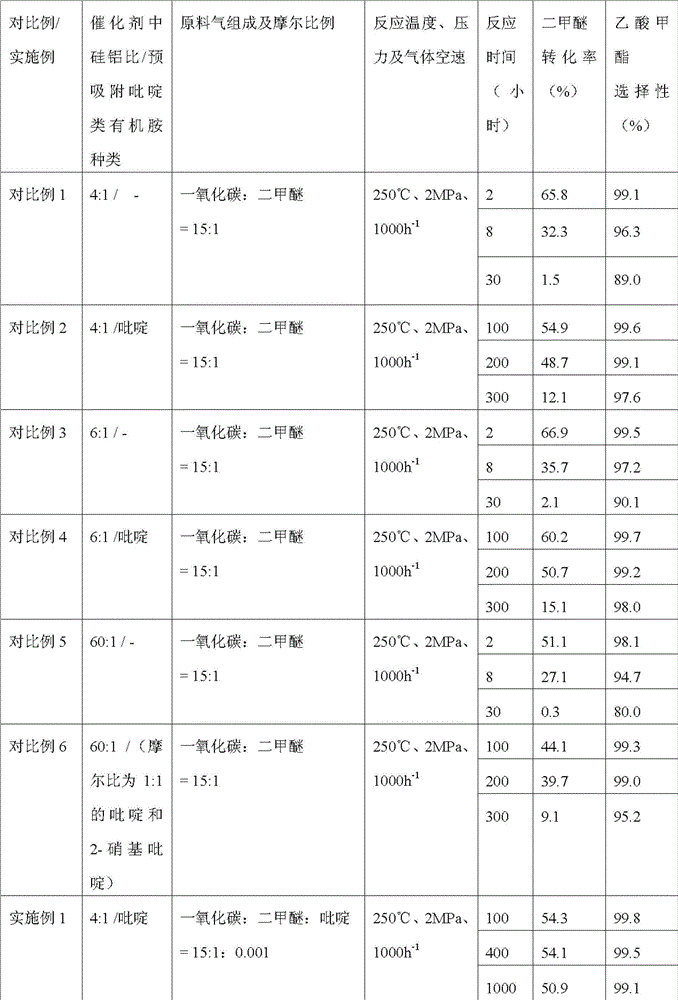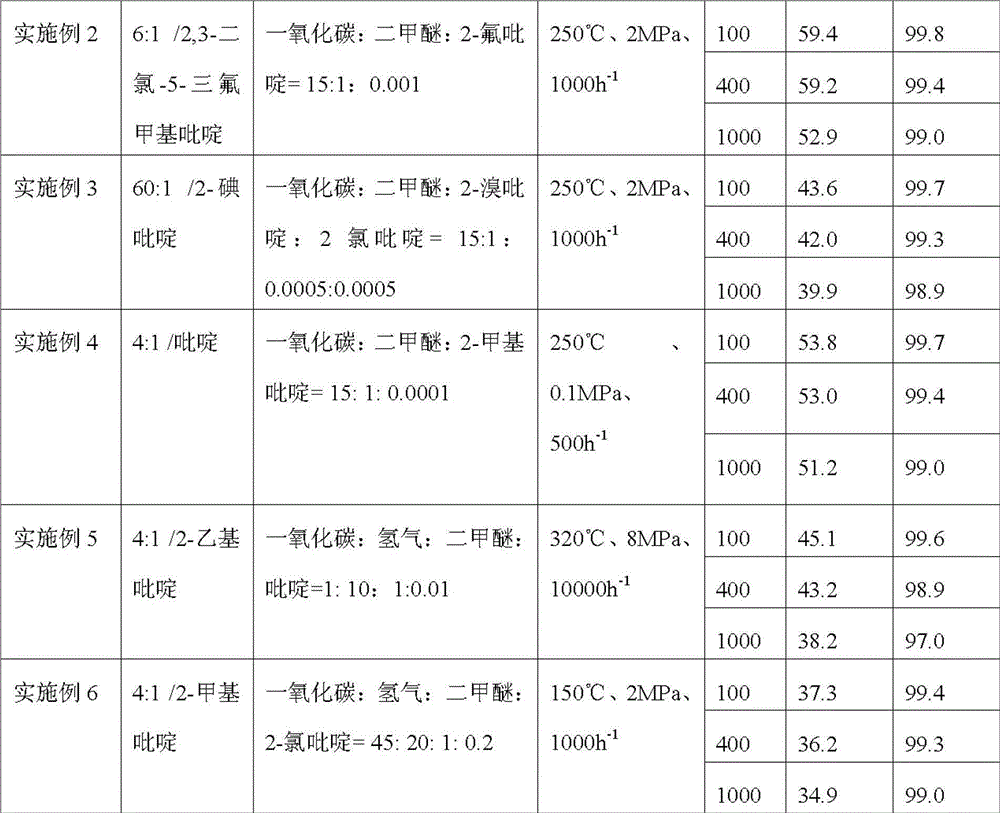A kind of method for preparing methyl acetate
A technology of methyl acetate and dimethyl ether, applied in the field of preparing methyl acetate, can solve the problems of short life, poor catalyst stability, restricted application and the like, and achieve the effects of prolonging life and improving stability
- Summary
- Abstract
- Description
- Claims
- Application Information
AI Technical Summary
Problems solved by technology
Method used
Image
Examples
Embodiment 1
[0036] 50 g of hydrogen-type mordenite with a silicon-aluminum ratio of 4:1 was calcined at 550° C. for 5 hours in an air atmosphere in a muffle furnace, and a part of the powder samples were pressed into tablets and crushed into 20-40 meshes for activity testing. Weigh 10g of the hydrogen-form mordenite sample, put it into a stainless steel reaction tube with an inner diameter of 8.5mm, activate it with nitrogen at normal pressure and 300°C for 1 hour, and then blow pyridine into the hydrogen-form mordenite by bubbling pyridine liquid with nitrogen , treated for 2 hours, then purged with nitrogen for 1 hour, then lowered to 250 ° C, introduced carbon monoxide: dimethyl ether: pyridine = 15: 1: 0.001, slowly boosted to reaction pressure 2MPa, controlled reaction space velocity GHSV = 1000h -1 , using gas chromatography to detect and analyze the tail gas online, and calculate the conversion rate of dimethyl ether and the selectivity of methyl acetate. The reaction results are sh...
Embodiment 2
[0038] The experimental procedure is the same as in Example 1, the silicon-aluminum ratio of the hydrogen-type mordenite is changed to 6:1, the adsorption of pyridine on the catalyst is changed to 2,3-dichloro-5-trifluoromethylpyridine, and the pyridine in the raw material gas is changed to 2-fluoropyridine, all the other experimental procedures are consistent with Example 1, and the reaction results are shown in Table 1.
Embodiment 3
[0040] The experimental procedure is the same as in Example 1, the silicon-aluminum ratio of the hydrogen-type mordenite is changed to 60:1, the pyridine adsorbed on the catalyst is changed to 2-iodopyridine, and the pyridine in the raw material gas is changed to 2-bromo with a molar ratio of 1:1. Pyridine and 2-chloropyridine, all the other experimental procedures are consistent with Example 1, and the reaction results are shown in Table 1.
PUM
 Login to View More
Login to View More Abstract
Description
Claims
Application Information
 Login to View More
Login to View More - R&D
- Intellectual Property
- Life Sciences
- Materials
- Tech Scout
- Unparalleled Data Quality
- Higher Quality Content
- 60% Fewer Hallucinations
Browse by: Latest US Patents, China's latest patents, Technical Efficacy Thesaurus, Application Domain, Technology Topic, Popular Technical Reports.
© 2025 PatSnap. All rights reserved.Legal|Privacy policy|Modern Slavery Act Transparency Statement|Sitemap|About US| Contact US: help@patsnap.com


